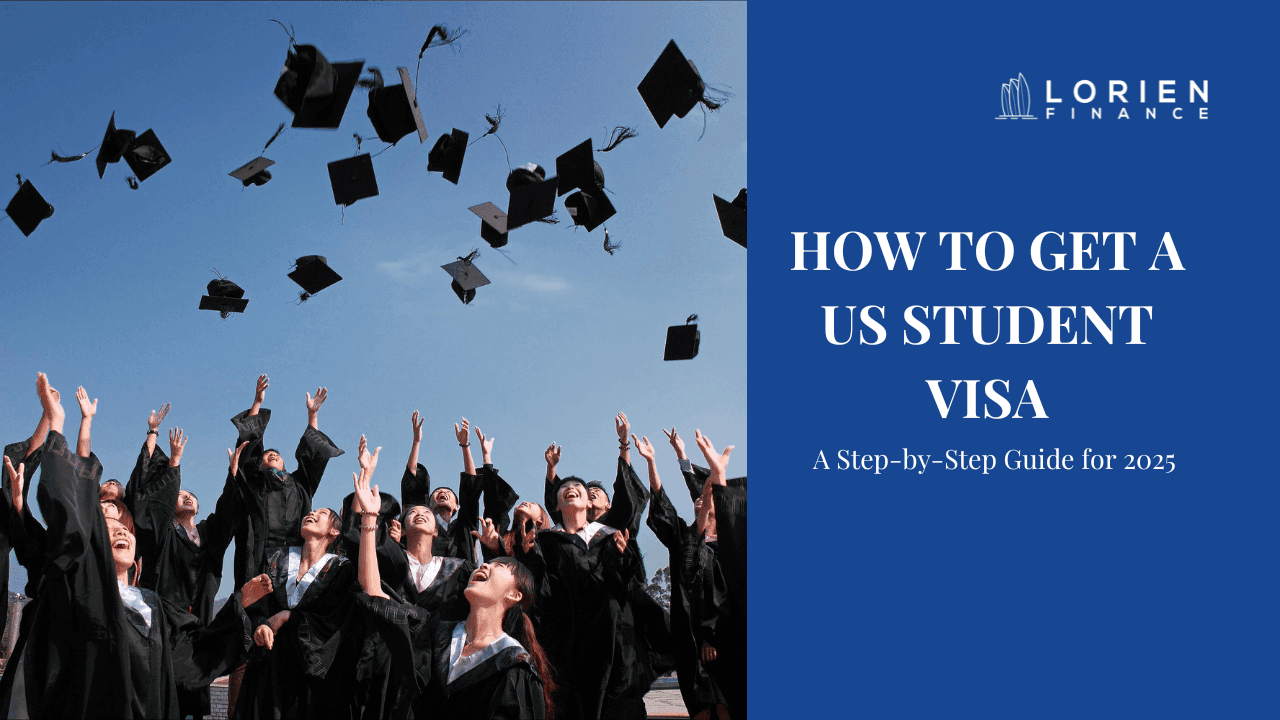How to Get a US Student Visa: A Step-by-Step Guide for 2025

Embarking on the journey to study in the United States is a dream for many Indian students. But before booking your flights and packing your bags, there’s one essential document you must secure — your US student visa. This guide on how to get a US student visa walks you through every detail, from understanding visa types to handling rejections and financing your studies. Let’s make the process smooth and stress-free.
Types of Student Visas for Studying in the USA
The US government issues different types of student visas depending on your program of study. Here’s what Indian students should know:
- F-1 Visa (Academic Studies): This is the most common visa for full-time students enrolled in universities, colleges, high schools, or language training programs in the US.
- J-1 Visa (Exchange Visitor): Ideal for those involved in exchange programs, research fellowships, or internships.
- M-1 Visa (Vocational Studies): For students pursuing non-academic or technical training in institutions like culinary or mechanical schools.
Understanding which visa applies to your course and institution is the first step in how to get a US student visa.
The Complete US Student Visa Application Process
Now that you know which visa suits your purpose, let’s walk through the visa application process:
Step 1: Secure Admission & Receive Form I-20
Apply and gain acceptance into a US government-approved educational institution. Once admitted, you’ll receive the Form I-20, which is mandatory for the next steps.
Step 2: Pay the SEVIS Fee
Before scheduling your visa interview, pay the SEVIS (Student and Exchange Visitor Information System) fee. For F-1 and M-1 visas, the fee is currently $350.
Step 3: Fill out the DS-160 Form
This online application form is essential. Ensure all details are accurate, as discrepancies may lead to delays or rejections.
Step 4: Book Visa Appointment
You need to schedule two appointments:
- One for biometrics at the Visa Application Center (VAC)
- One for the visa interview at the US Embassy or Consulate
Step 5: Attend the Interview
This is the make-or-break moment. Be confident, carry all necessary documents, and be ready to answer questions related to your course, financial status, and future plans.
Common Reasons for US Student Visa Rejection
Even with thorough preparation, some applications are denied. Knowing why can help you avoid these pitfalls.
- Insufficient Financial Proof: Students must show they can afford tuition, living expenses, and other costs.
- Lack of Ties to Home Country: Visa officers look for strong reasons (like family, future job prospects) to ensure you’ll return after your studies.
- Unclear Academic Purpose: If your course selection or university doesn’t align with your academic background or future goals, it can raise doubts.
- Poor Communication Skills: A lack of clarity during the visa interview or inconsistent answers can lead to denial.
Remember, how to get a US student visa also involves understanding what not to do.
Documents Required for US Student Visa Application
Here’s a checklist of documents you must carry during your interview:
- Valid passport
- Form I-20 from your university
- DS-160 confirmation page
- SEVIS fee receipt
- Visa appointment confirmation
- Academic transcripts and test scores (TOEFL, GRE, etc.)
- Proof of financial support (bank statements, scholarship letters, loan sanction letters)
- Passport-size photographs as per US visa specifications
Being prepared with the right documents is key in how to get a US student visa smoothly.
How to Finance Your US Education
Studying in the US is expensive, but not out of reach. Many Indian students finance their education through:
- Education Loans: Offered by Indian banks, NBFCs, and international lenders. Loans cover tuition, living expenses, insurance, and travel. Ensure you choose one with low interest rates and student-friendly repayment terms.
- Scholarships and Grants: Many US universities offer scholarships based on merit or need. Do your research and apply early.
- Part-Time Jobs: Once you’re in the US, you can work up to 20 hours a week on-campus with an F-1 visa. It’s not a primary source of income but helps with living expenses.
Platforms like Lorien Finance can help you compare lenders and choose the most suitable loan option. They guide students step-by-step, ensuring faster approvals and reduced stress.
Post-Visa Approval: What’s Next?
Once your US student visa is approved:
- Book your flight only after visa approval
- Attend pre-departure orientations
- Pack your documents and essentials carefully
- Stay updated with travel guidelines issued by the U.S. Embassy
Also, make sure you arrive in the US no more than 30 days before your program starts, as per visa regulations.
Figuring out how to get a US student visa doesn’t have to be overwhelming. With the right knowledge, documentation, and financial planning, thousands of Indian students successfully begin their U.S. academic journey every year.
Start early, stay organized, and seek help from reliable study abroad platforms. The U.S. is ready to welcome you — now it’s your turn to get visa-ready.
No matter how big or small your study abroad dream is, we’ve got you!






